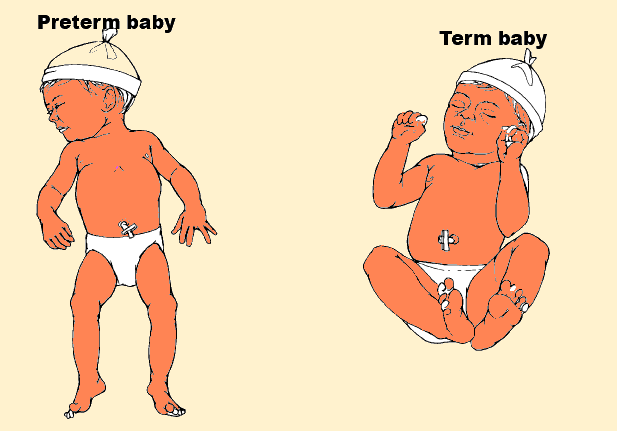Preterm and low-birth-weight babies are at increased risk of dying from hypothermia, infection, breathing problems and immaturity of their vital organs. As a result, they may be unable to adapt to life outside the uterus.
Characteristics of preterm and low-birth-weight babies
- Parts of their nervous system are not yet well developed.
- They have little fat under the skin; especially their brown fat is low. Brown fat is very important to generate heat for the newborn baby; it is found mainly over the shoulders, back, kidneys, neck and armpits.
- They lie very still so they can't generate heat by moving much.
- They have a high ratio of surface area to body weight compared to that of a child or adult, so they lose heat quickly from their skin.
- They have immature lungs so they have breathing problems.
- They don't have much immunity so they will be extra vulnerable to infection.
- The veins in their brain are thin and immature and are prone to bleeding.
- They may be too weak to feed well.

Figure 7.1: Difference between a term (right) and a pre-term baby (left)
From the above figure, what do we understand is that term baby‘s extremities will always be in flexed manner showing the normal tone of muscles, but preterm baby‘s muscles have poor tone, and they will present in an extended manner. The reason why preterm babies will be prone to infection is that their immune mechanisms are not well developed.

